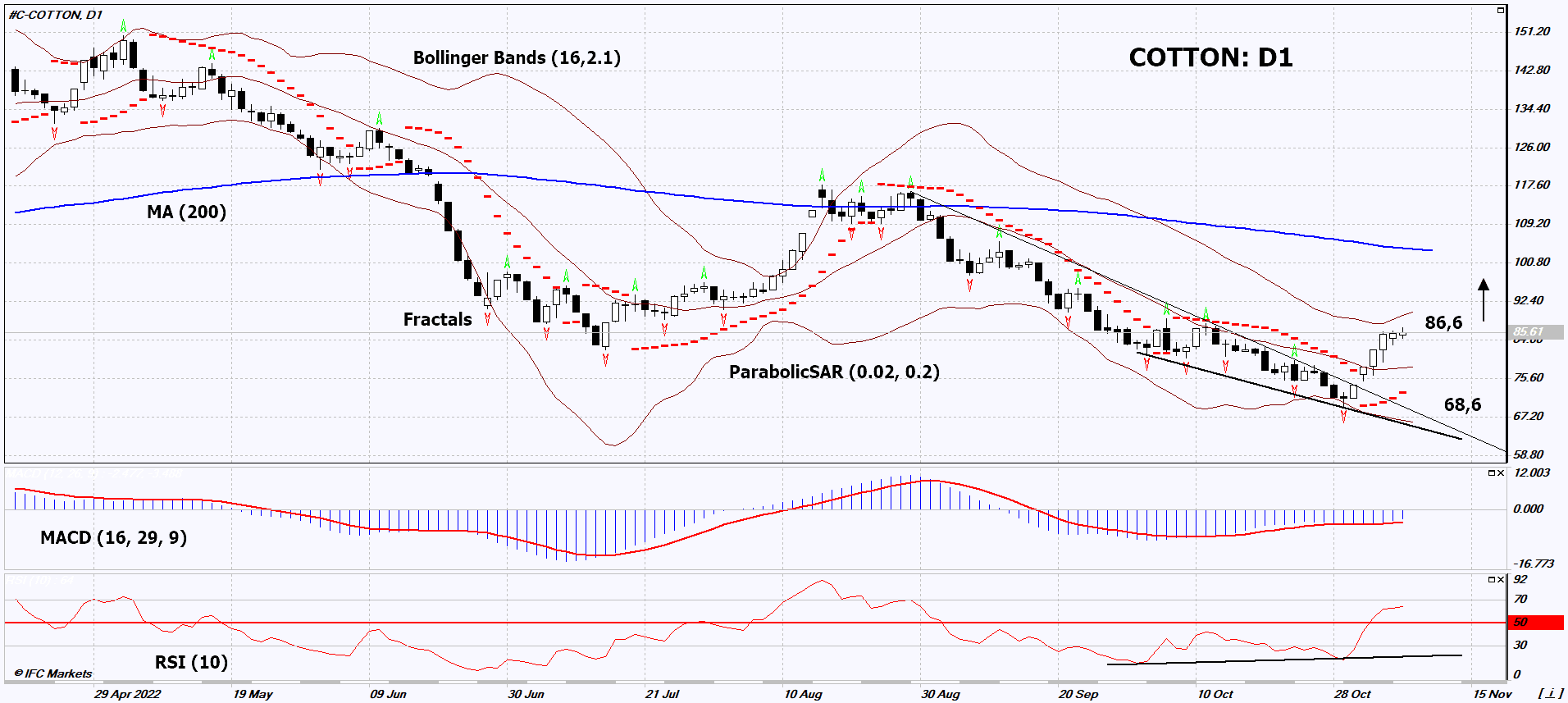Cotton Technical Analysis Summary
Above 86,6
Buy Stop
Below 68,6
Stop Loss
| Indicator | Signal |
|---|---|
| RSI | Buy |
| MACD | Buy |
| MA(200) | Neutral |
| Fractals | Buy |
| Parabolic SAR | Buy |
| Bollinger Bands | Neutral |
Cotton Chart Analysis
Cotton Technical Analysis
On the daily time frame, COTTON: D1 came out of the short-term downtrend up. A number of technical analysis indicators formed signals for further growth. We do not rule out a bullish movement if COTTON: D1 rises above its most recent high of 86.6. This level can be used as an entry point. Initial risk cap possible below Parabolic signal, 2-year low and latest down fractal: 68.6. After opening a pending order, we move the stop following the Bollinger and Parabolic signals to the next fractal low. Thus, we change the potential profit/loss ratio in our favor. The most cautious traders, after making a trade, can switch to a four-hour chart and set a stop loss, moving it in the direction of movement. If the price overcomes the stop level (68.6) without activating the order (86.6), it is recommended to delete the order: there are internal changes in the market that were not taken into account.
Fundamental Analysis of Commodities - Cotton
The US Department of Agriculture (USDA) slightly reduced the forecast for the global cotton harvest. Will the COTTON quotes continue to rise?
In its October review, the USDA slightly cut its 2022/2023 global cotton harvest forecast to 118.05 million bales. This is only 0.3% less compared to the previous review, but 2.2% more compared to the 2021/2022 season. Quotations may be supported by USDA expectations that US cotton production will decrease in the 2022/2023 season by 21.2% compared to the previous season. The United States ranks first in the world in cotton exports and third in the world in its production (after China and India). It is assumed that the main crop growth will be in India, China and Brazil. In addition, USDA expects an increase in the average global cotton yield by 1.7%. Rainy weather in India could lead to a downward revision of the cotton harvest.
